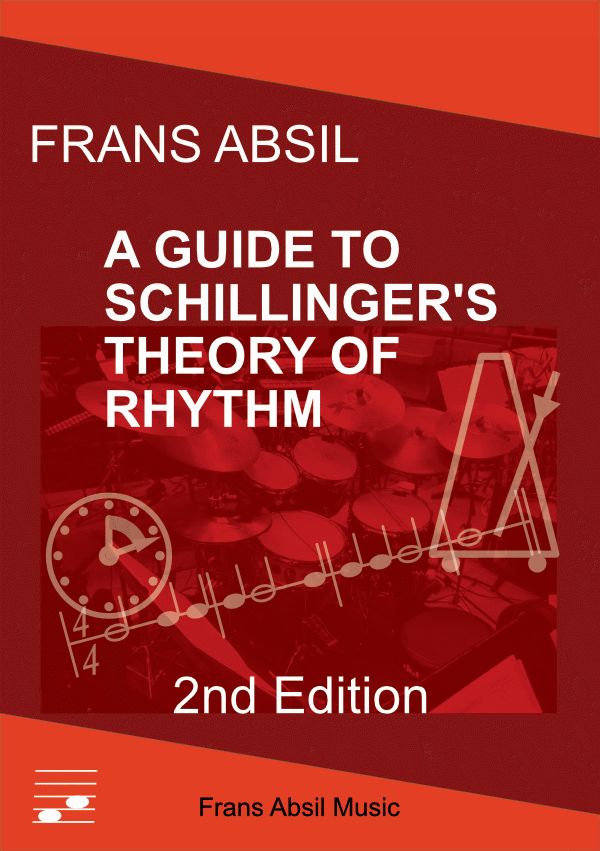Homepage > Documents > Theory of Rhythm E-Book
An introduction to the book by Joseph Schillinger about the Theory of Rhythm
A Guide to Schillinger's Theory of Rhythm, 2nd Edition
Purchase the book through PayPal (or credit card) and receive your personal copy as an e-mail attachment within 24 hours.
![]() This e-book covers many techniques for creating rhythm patterns, generate variations and development, and the application of rhythm to a multi-part musical score. It is based on the 'Schillinger System of Musical Composition'. Download the trial version of the book
A Guide to Schillinger's Theory of Rhythm, 2nd Ed.
This e-book covers many techniques for creating rhythm patterns, generate variations and development, and the application of rhythm to a multi-part musical score. It is based on the 'Schillinger System of Musical Composition'. Download the trial version of the book
A Guide to Schillinger's Theory of Rhythm, 2nd Ed.
The Schillinger System was published originally in 1946 and as a reprint in a 1640 pages two-volume book set in 1978. The system consists of 12 books on various aspects of musical composition. These were studied by composers and arrangers in radio, film, dance and theatre music. The system begins with a book on the Theory of Rhythm. This e-book guide is both a replacement for and an addition to the original document, providing alternative notation, clarifications and many new examples.
The 2nd Edition, Rev 2.2 of this book (A4 paper size, PDF format) contains 167 pages of valuable resources for the composer, arranger and music lover. The document size is 2.0 Mb, suitable for reading on tablets and computers. Hyperlinks enable easy navigation through the electronic version.
What's in the 2nd Edition?
- Two and three generator rhythms, using the interference and fractioning technique or variable velocities.
- Metrical division and time signatures through grouping.
- Development and variation of rhythms using homogeneous or generalized variation, homogeneous continuity and distributive powers.
- The application of rhythm to instrumental forms and distribution over multi-part scores.
- Evolution of rhythm families and style.
- There is a video introducing the book with a set of demos and audio examples: watch the
YouTube movie 'Introducing the Guide to Schillinger's Theory of Rhythm' >>

Detailed book content

- 14 Chapters, divided into three parts:
- Ch. 1: Introduction. Ch. 2: Interference of periodicities, Ch. 3: The techniques of grouping, Ch. 4: The techniques of fractioning, Ch. 5: Composition of groups by pairs, Ch. 6: Utilization of three or more generators.
- Ch. 7: Resultants applied to instrumental forms, Ch. 8: Coordination of time structures, Ch. 9: Homogeneous simultaneity and continuity, Ch. 10: Generalization of variation techniques, Ch. 11: Composition of homogeneous rhythmic continuity, Ch. 12: Distributive powers.
- Ch. 13: Evolution of rhythm styles, Ch. 14: Rhythms of variable velocities.
- Book content: x+157 pages, 61 figures, 5 tables, 40 examples. Table of contents, list of figures, references and index with hyperlinks.
More books:
- The 6th Edition of the Musical Analysis E-book >>
- The 3rd Edition of the Arranging by Examples E-book >>
- The 9 Volumes of Tonal Counterpoint Examples >>
- See more documents and go to the PDF Document Library >>

